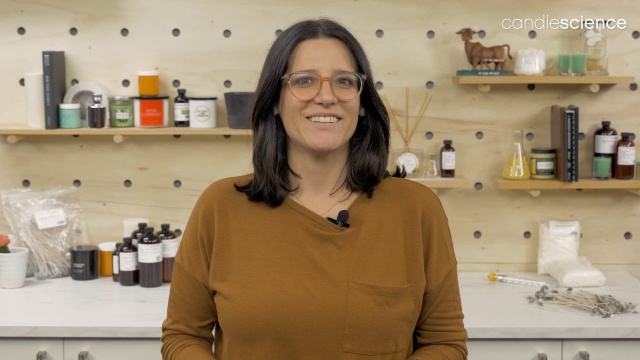Choosing the right wick size
The CandleScience guide to choosing the right wick size for your candle.
Need a wick Recommendation?
Use our Wick Guide tool to find a wick recommendation for your candles.
Choosing the Right Wick Size Video Transcript:
Hi, I’m Dana. One of the most important aspects of candle making is finding the right wick size for your candle. A properly wicked candle burns cleaner and gives reliable burn times and fragrance throw.
These three candles have been burning for 2 hours. The candle in the middle has the proper wick size. The flame is appropriately sized and does not flicker. The melt pool has extended to the edge of the container and is about 1/2 inch (13 mm) deep. The wick is burning cleanly with minimal to no carbon build-up. This is what a properly wicked candle looks like.
The candle on the left is under wicked meaning the wick size is too small for the candle. An under wicked candle will not burn out to the edge of the container but will instead burn down the middle, or 'tunnel'. Often the flame will extinguish itself before all the wax is burned.
The candle on the right is over wicked meaning the wick size is too large for the candle. It's easy to tell because the flame is too tall and flickers continually. The melt pool is deeper than 1/2 inch (13 mm), and the wick is producing excess carbon that causes the 'mushrooming' you see on the end of the wick. Wisps of soot can be seen leaving the flame periodically. If left to burn all the way, soot will collect on the inside of the container. The container can also become very hot and could damage the surface underneath or even crack.
The Side of the Candle
Looking at the side of the candles shows the difference in melt pool depth between the properly wicked candle in the center and the over wicked candle on the right. It is also apparent how much faster the candle on the right is consuming the wax. An over wicked candle will not burn as long as one wicked correctly.
Understanding Wick Sizes
All the wicks available through CandleScience follow the same rule. Within a series the larger the number, the larger the wick. So an ECO 14 is always bigger than an ECO 10, and an ECO 4 is always smaller than an ECO 6. But the numbers between series are not comparable. For instance, an LX-22 may or may not be bigger than an ECO 8.
Because your fragrances and additives like dye can affect the overall burn performance of your candles, we recommend using the CandleScience Wick Guide to find a starting point for your testing. So if you test your candle with an LX 14 and after testing it appears to be under wicked, try the next size up, in that case, an LX 16.
It’s also important to periodically test your candles to ensure that occasional variances in your wax or fragrances still work well with your chosen wick size.
Now that you know what to look for, adjusting the wick size of your over or under wicked candle is easy.
Thanks for watching!
